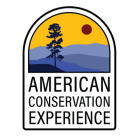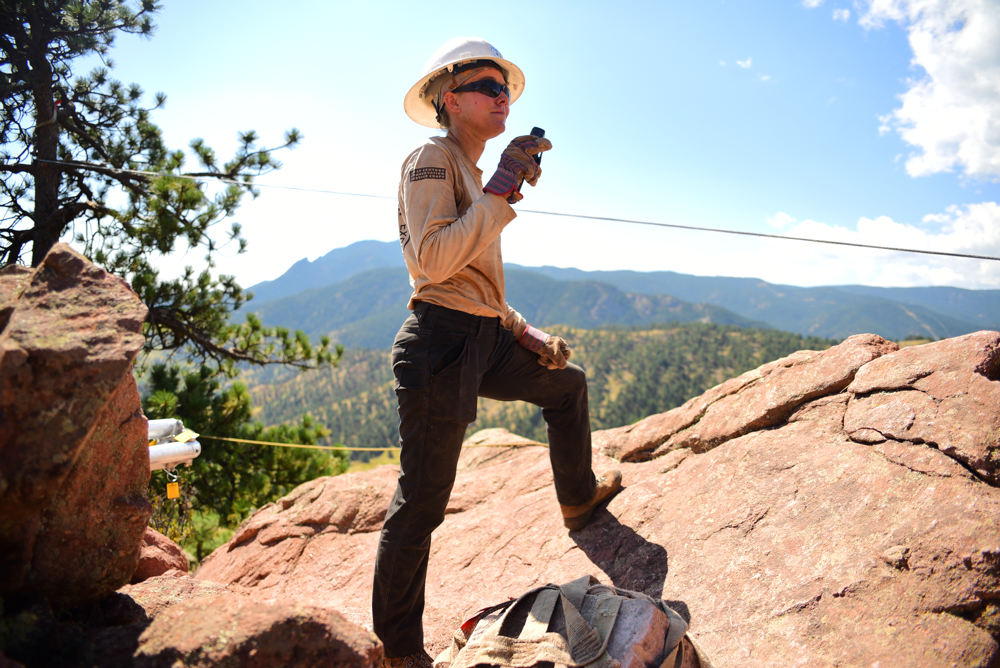Flyways and Byways
By: Lindsey Broadhead and Paul List
Each year millions of migratory birds utilize invisible superhighways to reach their nesting and wintering grounds. Our time surveying visitors these past few months was spent at a few important spots in the middle of one of these superhighways – the 4,000 mile long Pacific flyway. This flyway runs north-south from the Arctic to Mexico, crossing the entire west coast of the US and states such as Utah, Idaho, and Nevada. The diversity and abundance of birds in the wildlife refuges along the flyway bring joy to birders, photographers, hunters, and casual passersby alike as migration, one of nature’s grandest spectacles, occurs twice a year.

Snow geese along the Sacramento NWR auto tour. Photo by Lindsey Broadhead
Sacramento NWR Complex
In the heart of California’s Sacramento Valley lies the Sacramento National Wildlife Refuge Complex. The complex protects the last remaining riparian and wetland habitat in the valley, and is a vital wintering ground for thousands of waterfowl. While we were there, we spotted 5 species of goose (and a cackling/white-fronted goose hybrid!), 10 species of duck, tundra swans, and plenty of other migratory wetland birds such as long-billed curlews and sandhill cranes. With the influx of waterfowl comes an influx of predators, and birds of prey from bald eagles to great horned owls to red shouldered hawks were a common sight along the auto tours and viewing platforms of these refuges.
Our first three weeks in California were spent surveying visitors at Sacramento River NWR. This refuge is comprised of 30 disjointed units up and down the Sacramento River, all providing a safe haven for riparian wildlife and recreation opportunities for visitors. We were excited to learn that this refuge has frequent mountain lion sightings throughout its many units, but unfortunately neither of us were lucky enough to spot the elusive big cat. We were, however, just in time for prime sandhill crane viewing at the Llano Seco unit and met many birders and wildlife photographers that came to the unit specifically for the cranes.

Sandhill crane at Sacramento River NWR. Photo by Lindsey Broadhead
After our time along the river, we spent our remaining two weeks at Sacramento NWR, the hub of the complex. This refuge has plenty to offer- from birding to hiking to hunting, and because of its convenient location along I-5, we were able to speak to hundreds of people from all over the United States. We even had spare time to help out with an elementary school field trip and man the front desk of the visitor center for a few hours, which was a nice change of pace from surveying. Our housing at this refuge (appropriately named The Blue Goose Inn) was within walking distance of the visitor center and the beautiful wetland walking trails where mule deer, striped skunks, and great horned owls were a common sight. We spent many evenings enjoying the sunset along the trails and watching the thousands of geese fly off to feed in the nearby rice fields for the night.
The warm sunny climate of this region was a welcome change from colder temperatures up north, and it was easy to see why waterfowl would take advantage of this. With food aplenty and days filled with sun, this refuge felt like a waterfowl vacation destination, with population numbers steadily increasing the 5 weeks we spent there. When we left in mid November, the total waterfowl population was estimated to be 604,893 at Sacramento NWR, and a staggering 1,448,948 throughout the complex’s many other refuges in the valley.

White-fronted geese at Sacramento River NWR. Photo by Lindsey Broadhead
Mid Columbia River NWR Complex
After our time in California, we returned to Washington to continue sampling at the Mid Columbia River National Wildlife Refuge complex, home to additional stops for migrating birds along the Pacific Flyway. We had already sampled salmon anglers at one location in this complex: Hanford Reach National Monument (previously known as Saddle Mountain National Wildlife Refuge). But the new season brought out a new source of visitation-waterfowl hunters- at two new refuges: Columbia and McNary.
Located in the northern part of the complex, Columbia National Wildlife Refuge is a quiet site with dynamic scenery. With basalt cliffs shaped by volcanic activity and glacial flows thousands of years ago, this refuge attracts hunters seeking waterfowl, small upland game, and deer. While we had stayed at the Columbia bunkhouse when sampling at Saddle Mountain, we had not previously explored the refuge itself, and we enjoyed the opportunity to hike the trails and see our first snow of the season. While our exploring, Lindsey successfully uncovered one of the oldest geocaches in Washington, which is hidden somewhere beneath the refuge’s abundant sagebrush.

A hiking club out exploring the sagebrush wilderness. Photo by Lindsey Broadhead
Columbia NWR, with its protected wetlands and expansive habitat, is an important stopping point for many waterfowl during their migrations. It is home to an annual sandhill crane festival every spring as these great birds stop at the refuge on their way back north. Although we left a few months earlier than the sandhill cranes we saw at Sacramento NWR, it was nice to see the place where many of them would likely be stopping on their spring migration.
After Columbia, we had a short drive south to McNary National Wildlife Refuge, the headquarters for the Mid Columbia complex. Located along the Columbia River, this refuge featured ample opportunities for waterfowl hunting, viewing areas for photographers and birders, a two mile trail for walkers and explorers, and an environmental education center. While thick fog and ice on the water were less than ideal for visitation, the team was still able to meet a number of hunters and other visitors.

Lindsey surveys hunters at the hunt check station, which is also the environmental education building. Photo by Paul List.
In addition to visitors, Paul and Lindsey were able to meet with the Friends of Mid-Columbia River Wildlife Refuges. As was the case at other refuges, the friends group is instrumental in maintaining and growing the refuge, from manning the hunt check station to carrying out improvement projects around the headquarters. Paul and Lindsey got a taste of this sort of work by spending an afternoon volunteering with one of the Friends on various projects. They also got a taste of some delicious desserts at the Friends’ holiday party/planning meeting for the upcoming year. Paul is currently accepting suggestions for what to do with the new vest he won in the raffle (it has 14 pockets-he counted).

Paul and his 14-pocketed vest. Photo by Lindsey Broadhead
Like the birds that rely on these important refuges, we have spent the past four months migrating across the country. And like these birds, we found it necessary (or at least enjoyable) to make some stops along the way. The wildlife refuges discussed in our blog may have been our primary destinations (and worthy destinations they are), but our journey would not have been the same without many other stops. Should you find yourself in the Pacific Flyway (or Oklahoma), we encourage you to give these places a visit.
National Park System:
Rocky Mountain NP
Mesa Verde NP
Mt Rainier NP
Lassen Volcanic NP
Lava Beds NM
Golden Spike NHS
Restaurants:
Absolute Bakery & Cafe (Mancos, CO)
Yogurty Smogurty (Othello, WA)
Mayan Fusion (Fort Bragg, CA)
Anne’s Country Kitchen (Lawton, OK)
The Meers Store (Meers, OK)
Donut Wheel (Willows, CA)
Angie’s Restaurant (Logan, UT)
Black Bear Diner (CA chain)
Thai Orchid Cafe (Klamath Falls, CA)
Buckin’ Bean Coffee Roasters (Pendleton, OR)
Ironworks Cafe and Market (Othello, WA)
Smith’s-get the deli pizza (UT grocery store)
Attractions:
High Desert Museum (Bend, OR)
REACH Museum (Richland, WA)
National Historic Oregon Trail Interpretive Center (Baker City, OR)
Stokes Nature Center (Logan, UT)
NOYO Center (Fort Bragg, CA)
MacKerricher State Park (Fort Bragg, CA)
Three Island Crossing State Park (Glenn’s Ferry, ID)
Antelope Island State Park (Syracuse, UT)
North Cheyenne Canyon Park (Colorado Springs, CO)
Mendocino Coast Botanical Gardens (Fort Bragg, CA)
Sacramento Zoo (Sacramento, CA)
Shoshone Falls (Twin Falls, Oregon)
Berkeley Pit-aka the “Death Pit” (Butte, MT)
Wilson’s Arch and Looking Glass Arch (Hwy 191, near Moab, UT)
Sierra Nevada Brewery (Chico, CA)
The World’s Largest Functioning Yo-Yo (Chico, CA)
Utah State University (Logan, UT)
Klamath Basin Wildlife Refuges (CA & OR) – shoutout to Jeremy who gave us pumice rocks and sugar pine cones at Klamath Marsh!

